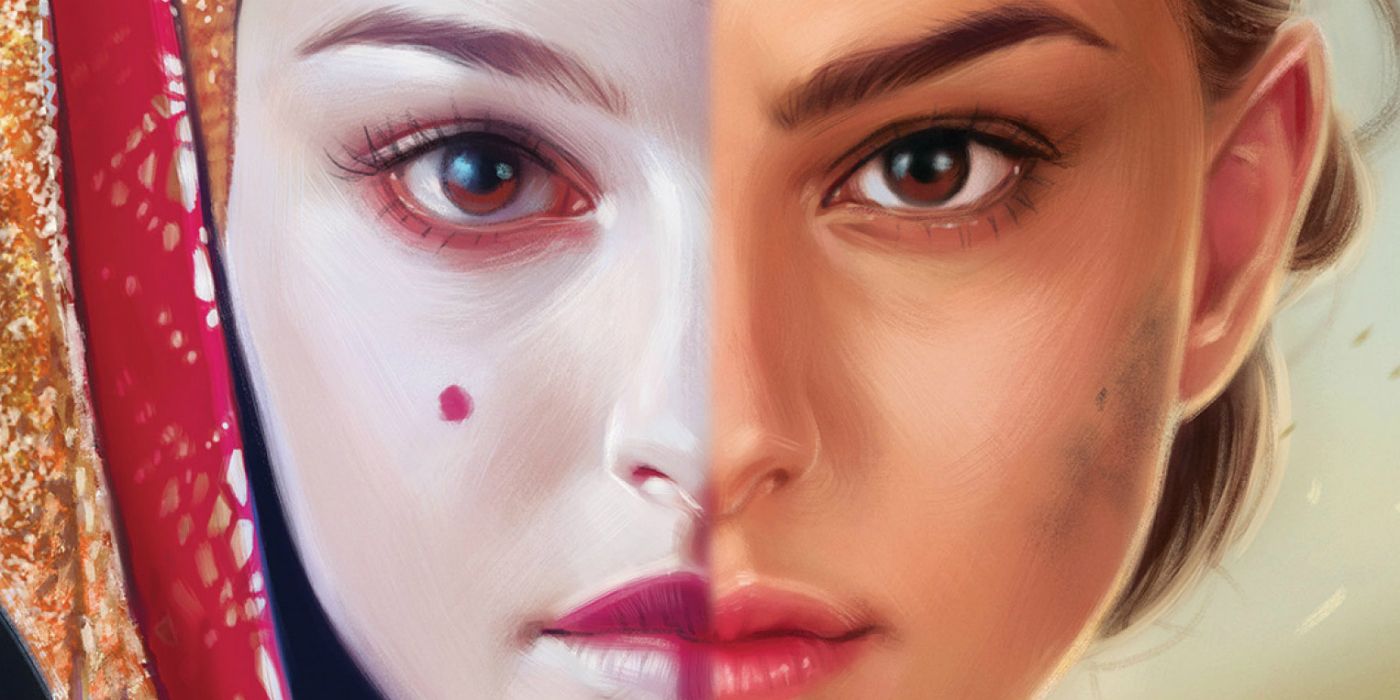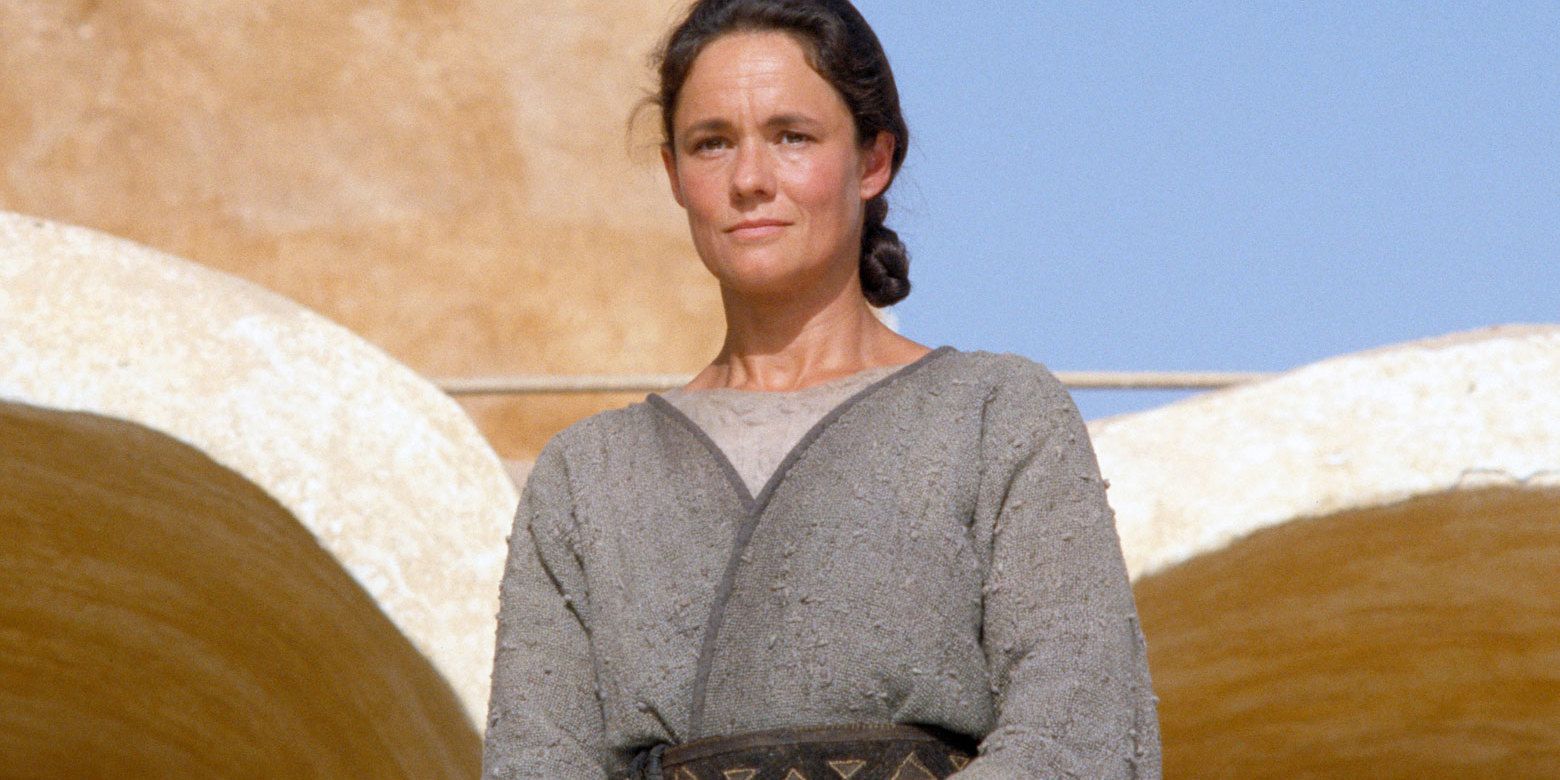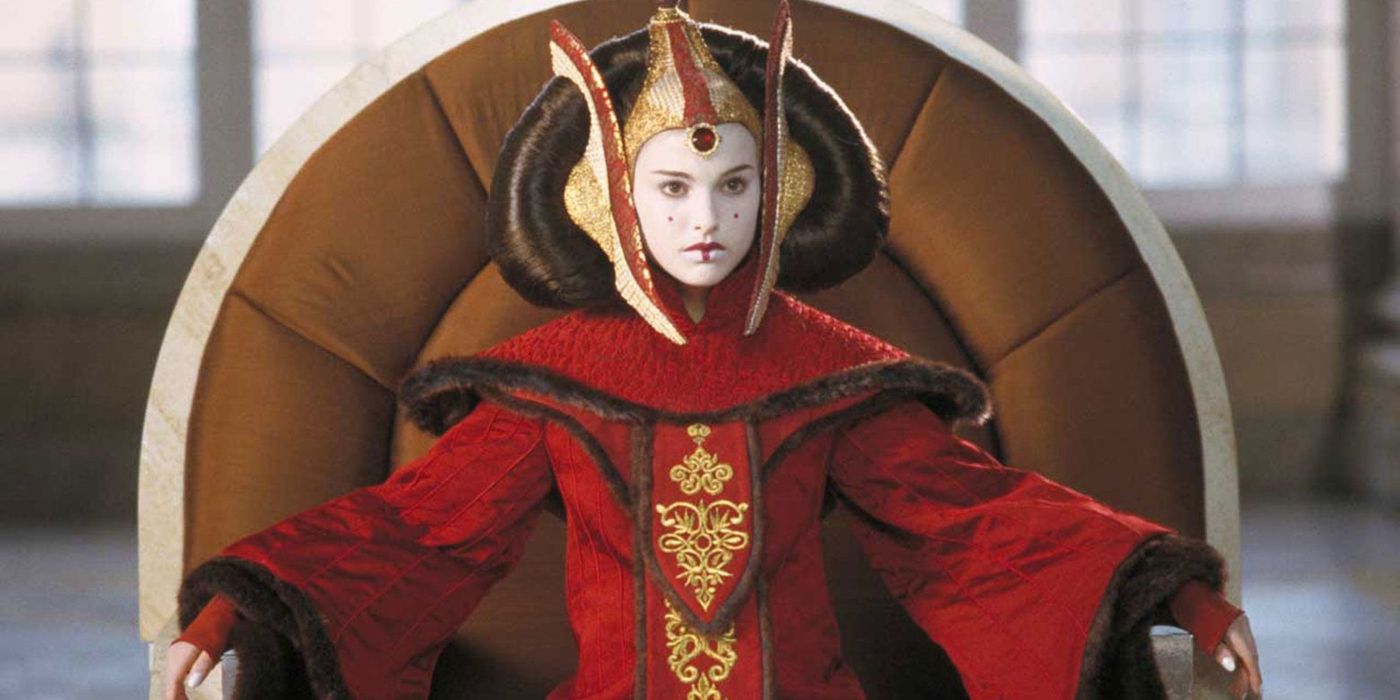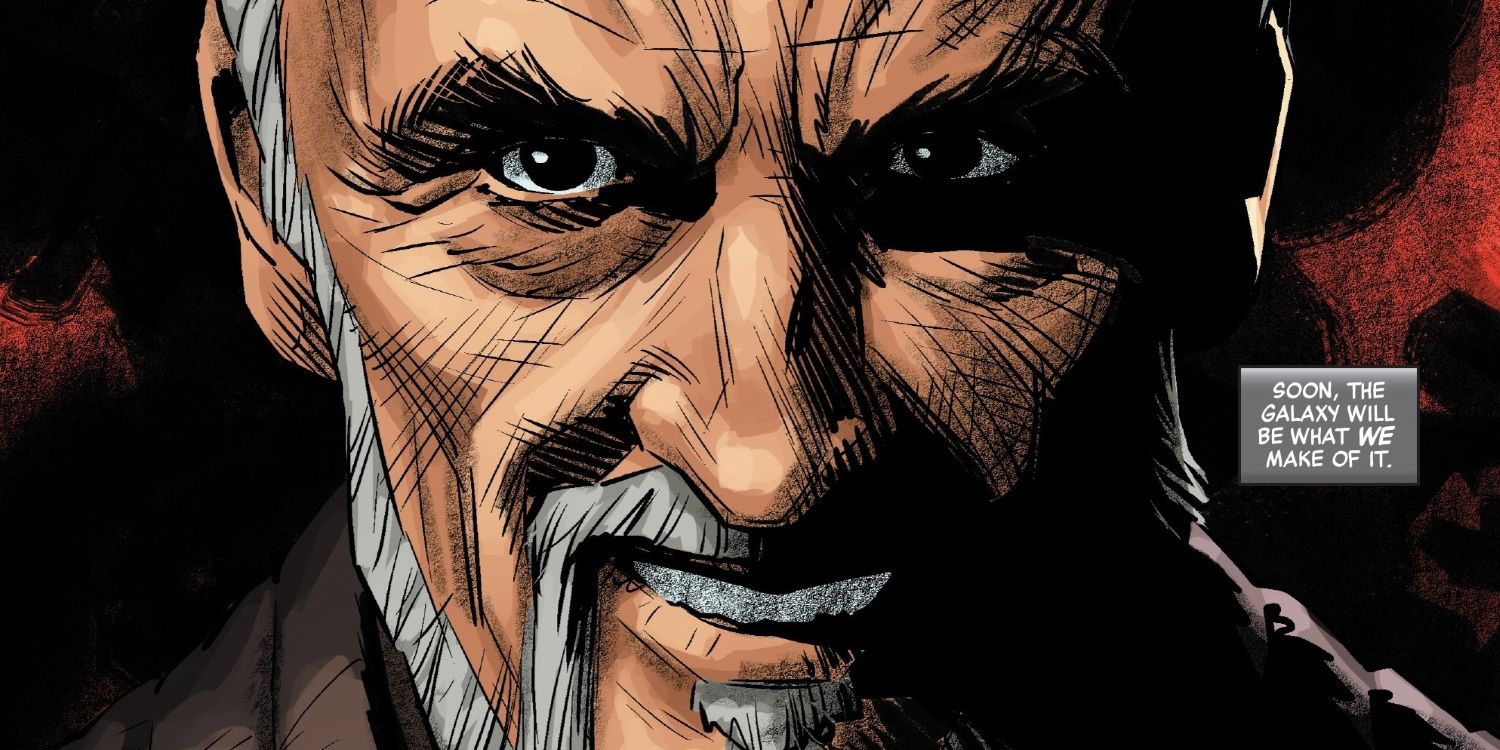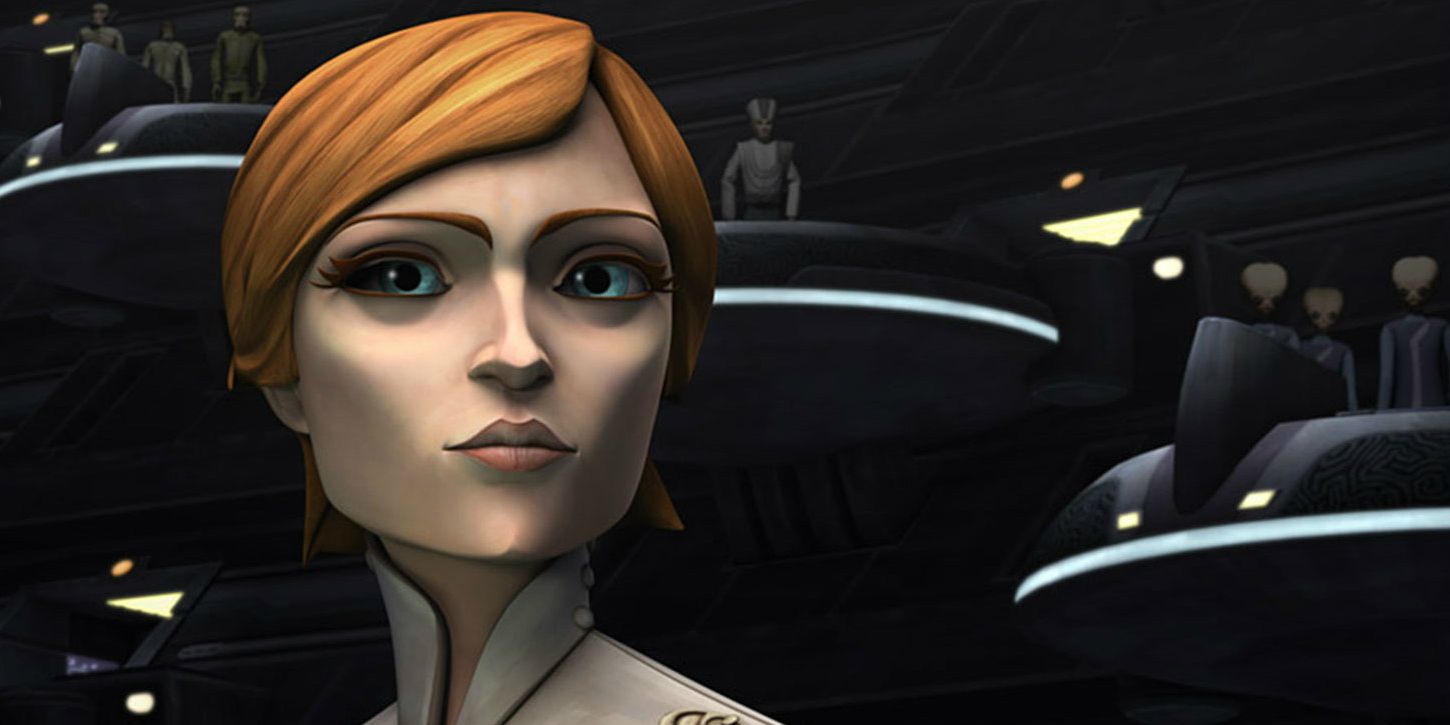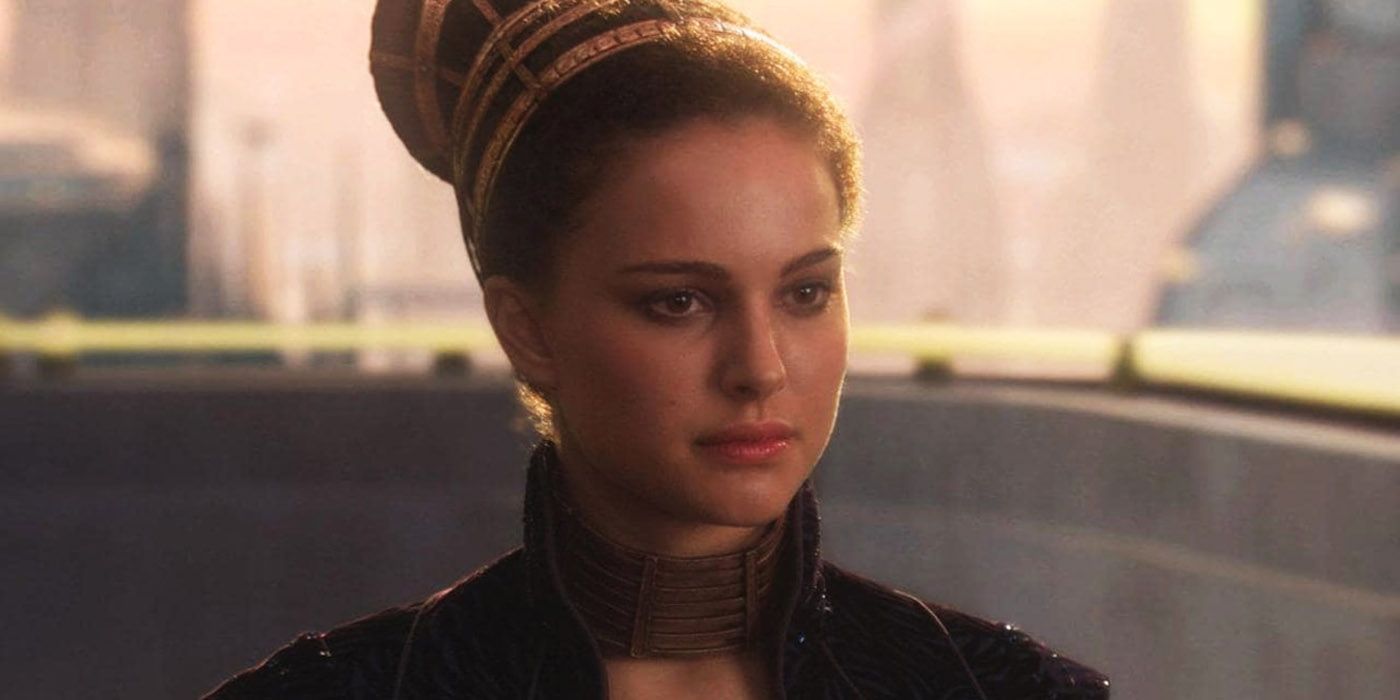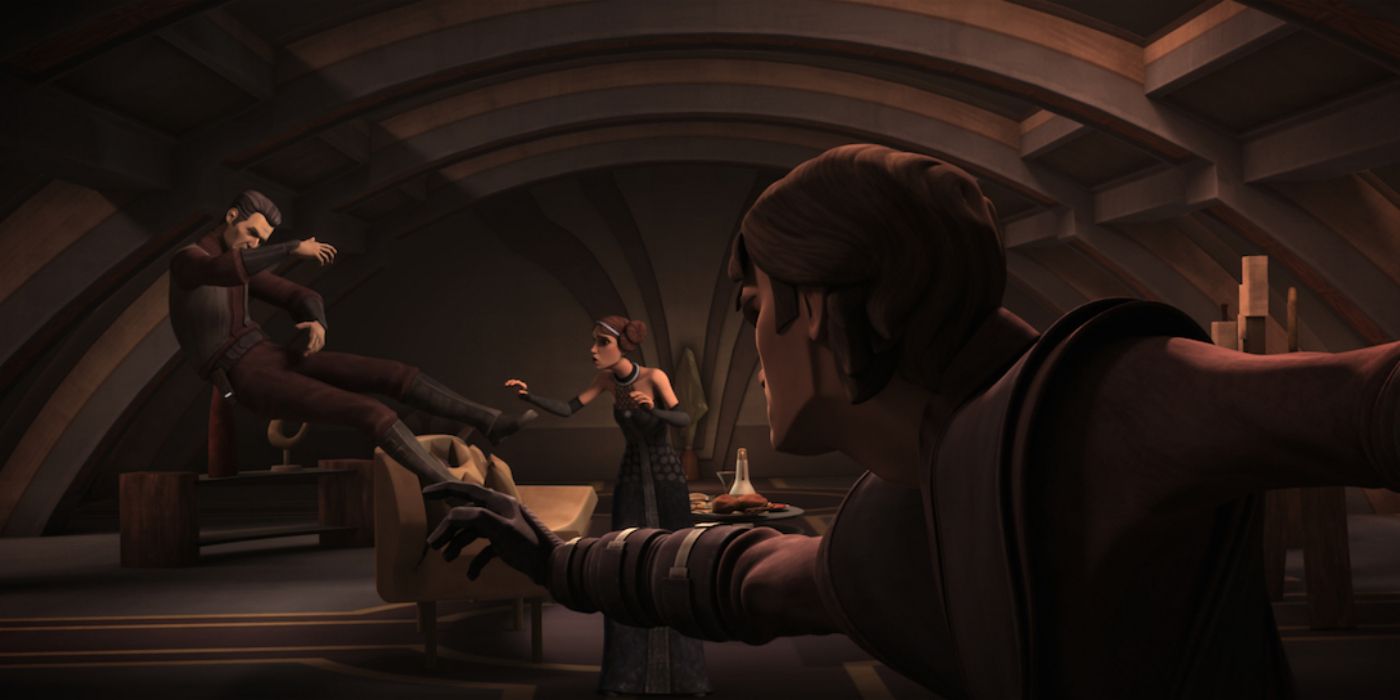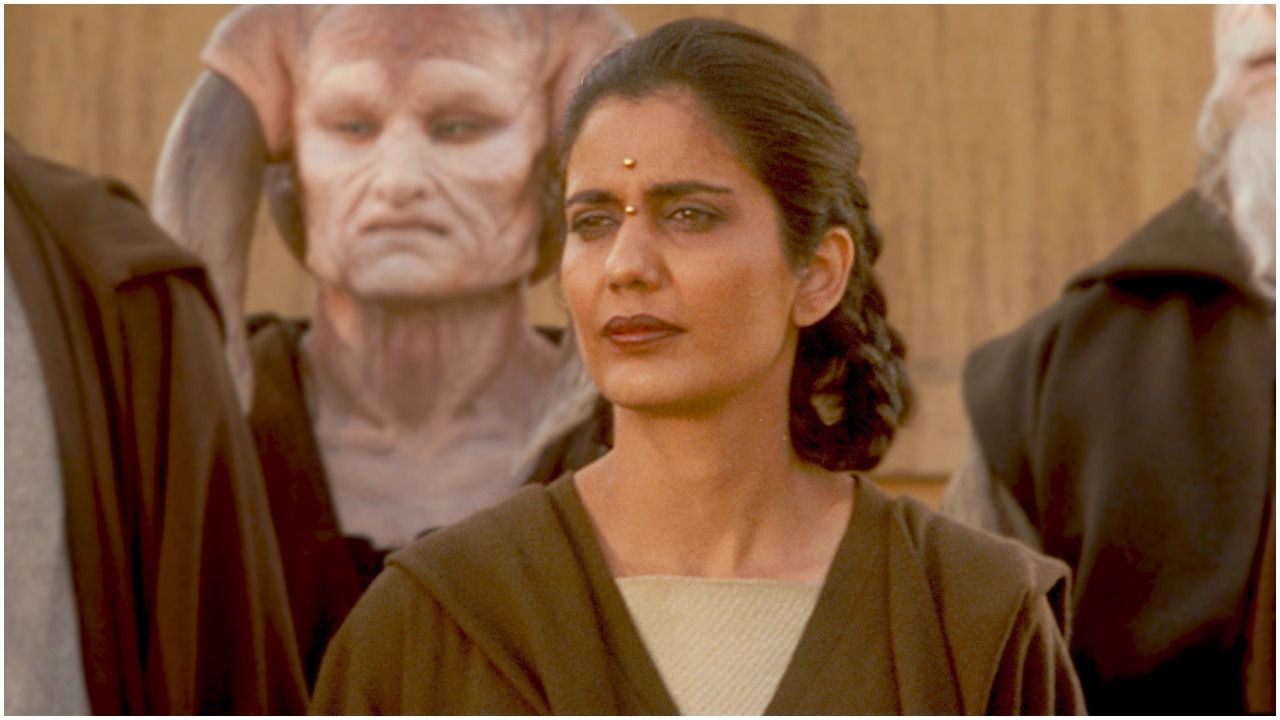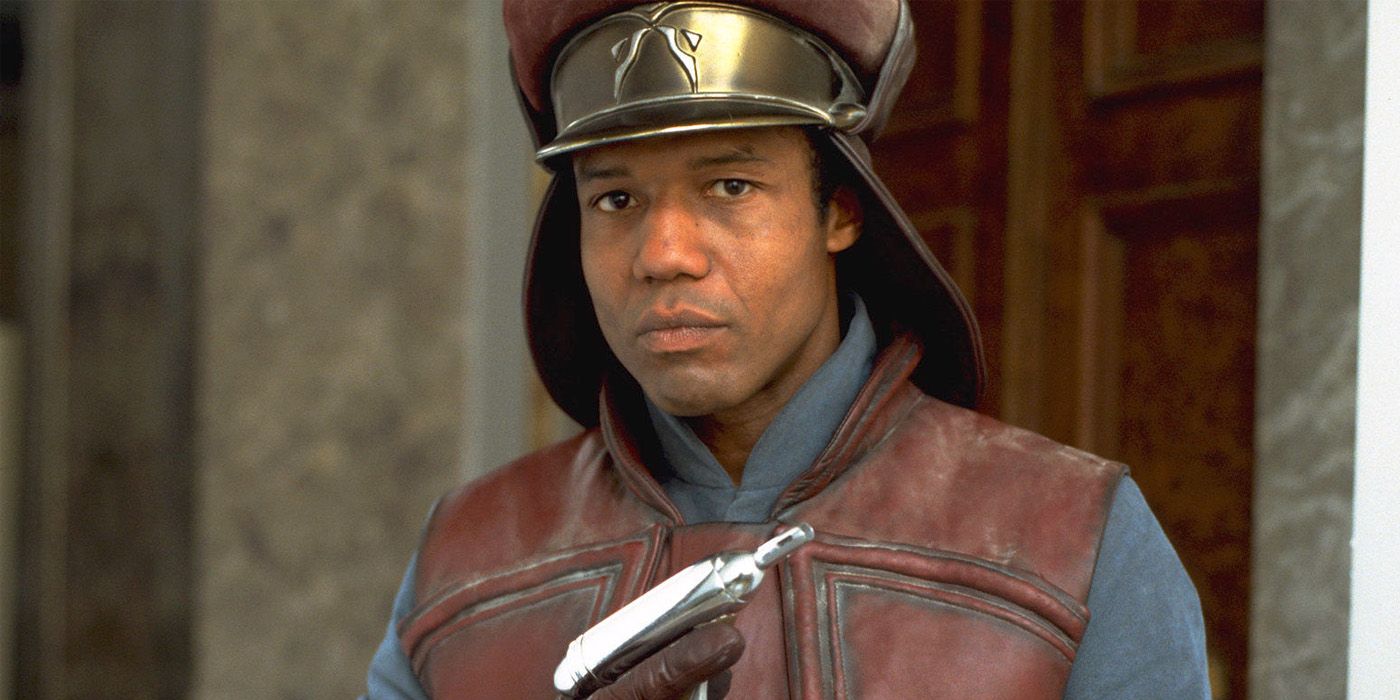Star Wars: Queen's Shadow is the story many fans have long dreamed of, a novel focused on Padmé Amidala, her fiercely loyal handmaidens, and their unique inner workings. Taking place in between The Phantom Menace and Attack of the Clones, Queen's Shadow follows Padmé as her time as a queen ends and she shifts into her role as senator of Naboo. Readers experience the story from the perspective of Padmé and her closest handmaiden Sabé - played by Keira Knightley in The Phantom Menace - as they navigate their new roles in an ever-changing galaxy. It's a fabulously character-driven story in itself, made even better with abundant and fascinating connections to the wider Star Wars galaxy, some of which we will explore through Star Wars: 10 Huge Revelations From Queen's Shadow.
Padmé Tried To Free Shmi Skywalker
Many fans have long wondered why no one from the Republic tried to free Shmi Skywalker in the time period between The Phantom Menace and Attack of the Clones. Queen's Shadow provided some clarity on this matter as it was revealed that Padmé did try to free Shmi. Even before becoming a senator, one of Padmé's main goals was to free Shmi and end slavery on Tatooine and throughout the galaxy, a mission that's importance was instilled in her from her experiences with the Skywalker family in The Phantom Menace. Because of her senatorial duties, Padmé was unable to go to Tatooine herself, so she sent her most trusted handmaiden Sabé instead. Sabé and her ally Tonra managed to free twenty-five slaves on Tatooine, but they were unable to track down Shmi and free her. As Padmé would later learn in Attack of the Clones, at that time Shmi had already been sold and found freedom through the Lars family.
Qui-Gon Jinn Knew The Truth All Along
Queen's Shadow confirmed what fans long suspected, that Qui-Gon Jinn was not fooled for one instant by Padmé's disguise in The Phantom Menace. When Bail Organa recognized that Padmé was disguised as one of her handmaidens, Padme confided that only one other person had ever made that discovery on their own - Qui Gon Jinn. She revealed that Qui-Gon saw it from the first moment he laid eyes on her as a decoy in The Phantom Menace. This adds more meaning to Qui-Gon's knowing smirk when Padmé reveals she's Queen Amidala in The Phantom Menace, and all his interactions with her throughout film, particularly their time together on Tatooine.
The Tactical Purposes Of Padmé's Wardrobe
Those who rolled their eyes at Padmé's ornate wardrobe need to think again after Queen's Shadow showed that every piece of clothing and every accessory served a tactical purpose. The fabrics were designed with material resistant to blaster fire and the jeweled brooches could hide recording devices or a personal shield. The heavier dresses could act as a physical barrier and even provide an escape hatch if needed, not to mention the headpieces that distracted and allowed decoys to step in. Padmé is not at all a frivolous person, so it makes sense that her wardrobe is reflective of the traits that actually define her and her handmaidens - strategy, defense, and intuition.
The Separatist Movement Was Already Underway
At the time of Queen's Shadow, the Clone Wars were still several years from breaking out, yet the Separatist movement was already underway in the senate. This was primarily seen in the novel through Mina Bonteri, the senator from Onderon, whose Separatist loyalty and the price of it played a major role in The Clone Wars television series.
Impressed by how Padmé took matters into her own hands to save Naboo when the Republic was unable to in The Phantom Menace, Bonteri sought out Padmé as an ally. Later on, Padmé caught Bonteri speaking with a hologram of a mysterious figure - likely Count Dooku - and Padmé was smart enough to realize this was where Bonteri's true loyalties rested.
Mon Mothma's Initial Distrust
The Clone Wars, deleted scenes from Revenge of the Sith, and other stories have shown that senators Padmé Amidala and Mon Mothma were close allies. Queen's Shadow proved that this wasn't always the case, though. In fact, Mothma initially distrusted Padmé as she believed Padmé was too loyal to her planet of Naboo, and not loyal enough to the larger Republic. This was largely rooted in Padmé helping to force former Supreme Chancellor Valorum out of office in The Phantom Menace in order to help Naboo during the Trade Federation's invasion. Padmé quickly proved to Mothma that she could be loyal to both Naboo and the Republic, which earned Mothma's trust moving forward.
How Padmé Could've Become A Separatist
As a staunch supporter of the Republic during the Clone Wars, it's difficult to imagine Padmé as a Separatist. Yet, Queen's Shadow showed that Padmé could've become a Separatist had she prioritized her alliances differently in her early days in the senate. Padmé tried building relationships with established senators like Mina Bonteri of Onderon, along with Mon Mothma of Chandrila and Bail Organa of Alderaan. Padmé ended up prioritizing her alliance with Mothma and Organa, two senators firmly dedicated to the Republic. With Bonteri already a major figure with the Separatist movement, had Padmé chosen to prioritize her alliance with Bonteri instead, Padmé could've gone down the Separatist path.
Padmé's History With Rush Clovis
Rush Clovis became an important character in The Clone Wars, particularly concerning his relationship with Padmé. His history with Padmé was alluded to but left ambiguous. Queen's Shadow unveiled that ambiguity, showing how Clovis and Padmé began their senatorial careers around the same time.
Padmé was wary of him for a while but warmed up to him as they worked closely together during a relief mission. In the aftermath of their mission, Clovis tried to kiss her, which rightfully infuriated Padme as Clovis did not have her consent. Knowledge of these events provides more context for what occurs between Padmé and Clovis in The Clone Wars.
The Depa Billaba Connection
Jedi Master Depa Billaba assisted Padmé during a survey to the planet Bromlarch, the first step in what would become an important relief mission for Bromlarch and the Republic as a whole. Billaba acted as a representative for the Jedi, providing wise counsel and even flew a starfighter during a supply run to Bromlarch, during which she defended Padmé and her allies against attacking pirates. Not only was it fascinating to see Padmé working so closely with a Jedi other than those who she normally worked with, but also because it connects her to Star Wars Rebels character Kanan Jarrus. Billaba trained Kanan - then known as Caleb Dume - and she also helped Padmé in her early senatorial days. As such, Billaba helped shape two of the galaxy's greatest heroes - Padmé Amidala and Kanan Jarrus.
Padmé's Unfinished Work
After Padmé's funeral in the novel's epilogue, through Sabé, fans got a look into Padmé's remaining political passion projects, inspiring goals that tragically went unfinished. Sabé saw Padmé's files including proposals to reinstate term limits on the chancellorship, improving the individual rights and life quality of the Republic's Clone soldiers, and abolishing slavery. While it's devastating to see Padmé 's unfinished work - especially considering that the Galactic Empire thrived on the very abuse of power and individuals that she was fighting so hard against - at least audiences know that Padmé fought until the very end in the political arena. It's also refreshing as some of Padmé 's political initiatives revealed in the epilogue haven't been shown as much in other stories, meaning there's potential to explore her pursuits of these goals in future stories.
Palpatine's Appointment Of Quarsh Panaka
Quarsh Panaka protected Padmé with relentless dedication in The Phantom Menace and Queen's Shadow detailed how thoroughly he trained Padmé and her handmaidens. However, Panaka retired from this role and became increasingly loyal to Sheev Palpatine, a loyalty that paid off after Padmé's demise. Longtime Naboo governor Sio Bibble retired, and instead of Padmé 's former handmaiden Saché being elected to the position as expected, Palpatine appointed Panaka as governor of Naboo. When Panaka made his first official address to the people of Naboo, his wife Mariek and his nephew Typho didn't stand by him. They'd served Padmé after Quarsh Panaka's retirement and their decision not to stand by him proved that even after her passing and the Imperial appointment, they were still more loyal to Padmé and what she stood for than to Quarsh and what he represented as a servant of Palpatine's Empire.
Which revelation from Star Wars: Queen's Shadow did you enjoy most? Sound off in the comments!

